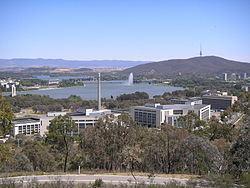Wikipedia:WikiProject Military history/News/July 2023/Book reviews
|
Blood Lust, Trust and Blame - Samantha Crompvoets |

![]()
![]()
![]()
![]()
![]()
- By Nick-D
This book is an essay by the sociologist Samantha Crompvoets about the underlying causes of the alleged war crimes committed by Australian special forces in Afghanistan. Crompvoets was engaged by the Australian Army in the mid-2010s to work with the special forces units on cultural issues. Her interviews with serving soldiers and veterans uncovered evidence of war crimes, which led eventually to the Brereton Report that found evidence of the killings of 39 prisoners and civilians. War crimes investigations are ongoing at present.
As the book is short (75 pages) and has been published in a small format, there's not a great deal to say about it. Crompvoets' main argument is that blaming the misconduct in the special forces on 'cultural' issues is a cop out, and that efforts to prevent similar crimes by reforming 'culture' are pointless. She argues that the focus should be on improving leadership and how power is distributed within the Army, as the 'culture' of organisations is an amorphous concept. She buttresses this argument with evidence from her work with the special forces, as well as the results of reform processes elsewhere in the Army and broadly comparable organisations. I found this analysis to be highly convincing, and Crompvoets' recommendations are sensible.
The main shortcoming of the book is its small size. Crompvoets is an expert on the issues at play here, and a full-size book would have been invaluable. Her report from 2016 on culture in the Australian special forces community is online though, and is an interesting read.
Publishing details: Crompvoets, Samantha (2021). Blood Lust, Trust & Blame. Melbourne: Monash University Publishing. ISBN 9781922464613.
Return to Victory - James P. Duffy |

![]()
![]()
![]()
![]()
![]()
- By Hawkeye7
The Philippines campaign (1944–1945) was the largest and most important campaign of the Pacific War, but has not attracted much interest in the United States, and there is a fair bit of misinformation floating about on the internet. What has been written about has focused on a couple of actions. The first is the controversial Battle of Leyte Gulf, which has been re-fought many times. The other, albeit to a lesser extent, is the Battle of Manila (1945). This book also devotes a lot of space to these, reflecting the literature out there.
The campaign was vast, and the book is small, so an overview is what the reader gets. If you are completely unfamiliar with the campaign, and want to know about it, this book would be a good place to start. Not only does it provide a broad description of events, but the footnotes deliberately direct the reader to recent and relatively easy-to-find works on the campaign where more information can be found. The problem is though that there is indeed a lot more information and the book concentrates on the most written-about parts, giving it an uneven coverage of events. The author goes out of his way to correct some of the misconceptions out there, such as whether Manila should have been bypassed. (He points out that this would not have saved anyone, as the Japanese commander had ordered the killing of every man, woman and child in the city.)
Publishing details: Duffy, James P. (2022). Return to Victory: MacArthur's Epic Liberation of the Philippines. New York: Hachette Books. ISBN 9780306921926.
The Factory - John Fahey |
![]()
![]()
![]()
![]()
![]()
- By Hawkeye7

The Australian Signals Directorate (ASD), formerly the Defence Signals Directorate (DSD), was formed in 1947 as the Defence Signals Bureau, using personnel who had staffed the Central Bureau and Fleet Radio Unit, Melbourne, during the Second World War. It was a secret organisation for many years, but is fairly well-known today as the Australian component of the Five Eyes. The book tells its story up to 1972. Despite the subtitle, the first two hundred pages focus on the period up to the end of the war, and Defence Signals Bureau narrative commences around page 300. It takes pains to note that the wartime signals intelligence function in Australia involved all five of the Five Eyes countries. Canadian readers might be surprised at the extent of Canadian involvement in signals intelligence in the South West Pacific Area.
The book is written by John Fahey, who worked at DSD for many years. The writing style is chaotic, with the narrative sloshing about like a ship in a cyclone, and a good editor was sorely needed here. Some points are repeated many times while others appear before they are properly introduced. I am sure that readers who already have a shelf of books about signals intelligence will find space for this book, but those who are hoping for a more technical account will be disappointed, although there are some interesting titbits. The units involved are carefully listed, along with their roles, but details about how they functioned are missing. The more casual reader may be none the wiser about this, but may appreciate the extended discussion of the purpose of signals intelligence and its contribution to the nation's defence.
Publishing details: Fahey, John (2023). The Factory: The Official History of Australian Signals Directorate. Vol. 1: 1947–1972. Crows Nest, New South Wales: Allen &Unwin. ISBN 978-1-76106-772-3. OCLC 1371987492.
Recent external reviews |

Blome, David A. (2020). Greek Warfare beyond the Polis: Defense, Strategy, and the Making of Ancient Federal States. Ithaca, New York: Cornell University Press. ISBN 978-1-5017-4752-6.
- Blome, David A. (May 2023). "Review of Blome, David A., Greek Warfare beyond the Polis: Defense, Strategy, and the Making of Ancient Federal States". H-War, H-Net Reviews.
Stille, Mark (2022). Essex-Class Aircraft Carriers 1945–91. Oxford: Osprey Publishing. ISBN 9781472845818.
- Melly, R.G. (20 June 2023). "Essex-Class Aircraft Carriers 1945-91". The Naval Review.
Works on the Royal Australian Air Force in the Vietnam War
- Mahoney, Ross (17 June 2023). "#ResearchNote – The Royal Australian Air Force and the historiography of the 'air wars' over Vietnam". Balloons to Drones.
Robinson, Michael A. (2022). Dangerous Instrument: Political Polarization and US Civil-Military Relations. New York City: Oxford University Press. ISBN 9780197611562.
- Schmidt, Todd A. (19 May 2023). "Dangerous Instrument: Political Polarization and U.S. Civil-Military Relations". Military Review. Army University Press.
|


